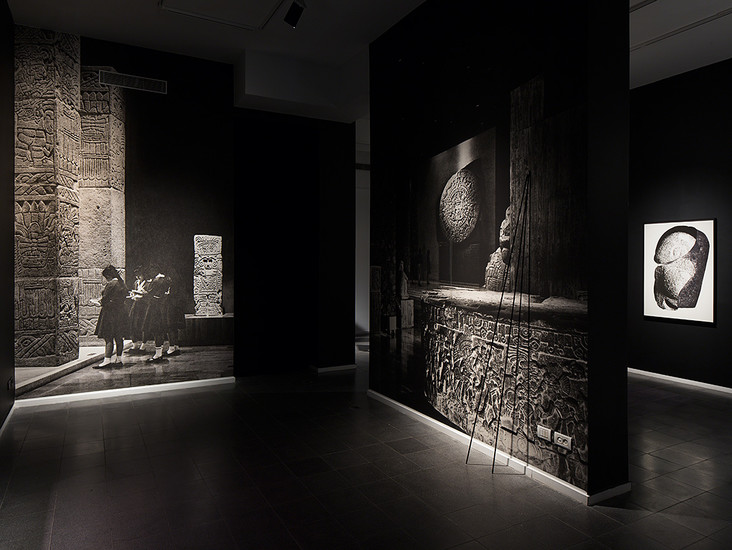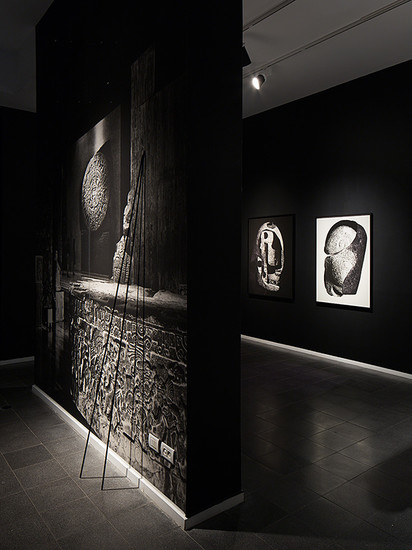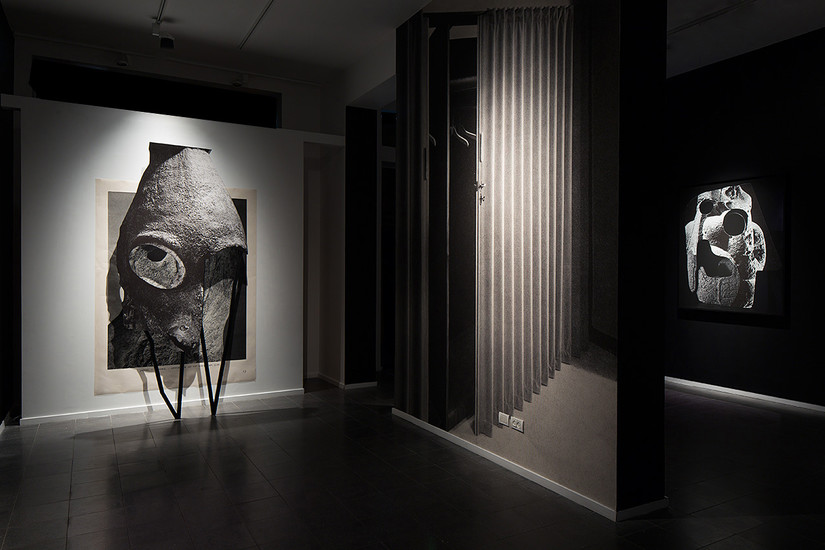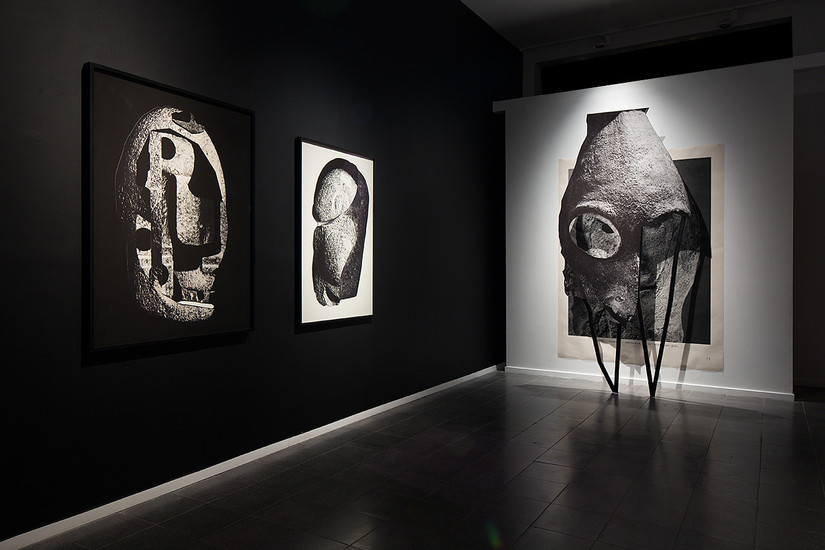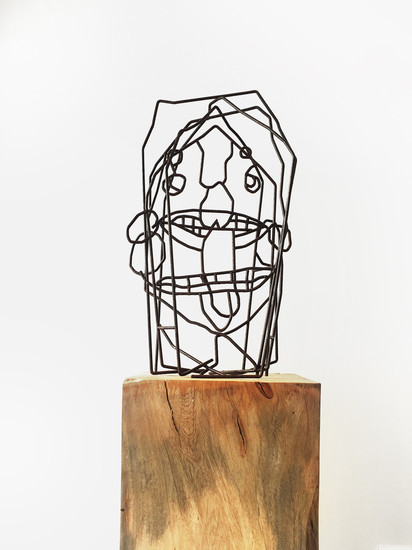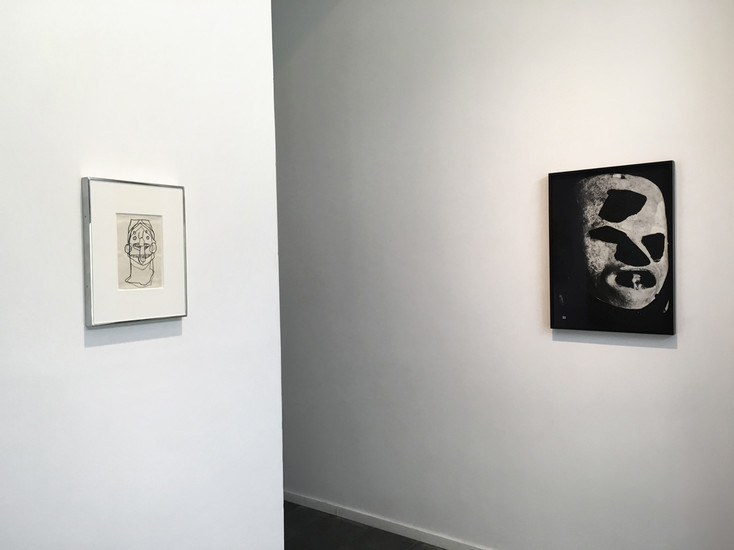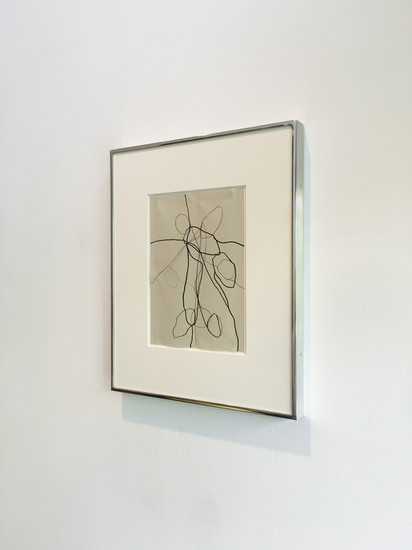Night is Generally My Time for Walking
Yael Burstein
Beloved Lake
How long since this stillness was swarming with life? A head of snakes gave us his petrifying gaze, his touch over soft sands turning seaweed into corals. How long since the webs of enchantment were taken off of our eyes? The morning that flooded the world with its light wiped out the shadows and their blessed fears. It put to work an industrious stream roller, to level with it the dimensions of time and space. As to us, master drifters, we were left to move about between walls of glass, with our nose, we discovered, bumped against the shamefacedness of the surface....
Was this the thing that awoke the desire to return to the cave? For that is what is at stake here. And if there’s anything tricky in the experience of walking around the exhibition, it is but the smile of the one captured in the plain, peering right into us. I shall promptly make clearer – or more obscure, rather – this scene of darkness and light that unravels before us, the space of a Tel Aviv gallery whose walls were “dressed up” as an ethnography museum.
It seems that we’re at it again, going in the way of Picasso and his rivals and plucking masks, those metaphoric vessels of an “otherly” order of knowledge long since re-appropriated. Primitivism, you may say. Magicians of the earth1. What are we to do with them now? The return; a return that calls forth witnesses from a different, “otherly” time and space, one that slips in-between the works on view, bringing with it a longing for an immediate contact with the world – a world that not even the mask had meant to shroud, but rather to materialize through the holes that it tore in it and at it. Is this the return as brought to life in the cavity of the mouth, in the oral mumbling of generations on end? Or in the soul perhaps, always ready to fall back on its own pitfalls, to constitute, in the name of repeated instances of the identical, its own identity?
This brings to mind an anecdote from the life of Picasso, a notorious lover of pigeons. Picasso’s wives, knowing that he could not take the loss of a pigeon, made sure to replace any dead pigeon with a new identical one. The same fear of death that plagued Picasso his entire life – and that projects so vividly from his ultimate portrait – is reincarnated in the principle of the return, in the compulsiveness of repeated iterations. How funny and heartrending at the same time this lineage of interchangeable pigeons, each an homage to the first but also a testament to its dispensability.
What was Picasso thinking while feeding his immortal pigeons? Two possibilities come to mind, both pointing at something essential at the core of art-making. The one, a “suspension of disbelief,”2 would allow the artist to look at every pigeon as if it were the first instance, that original pigeon he once purchased and loved; while the other takes upon itself this chain of accruing representations that, like a snowball, keeps amplifying the core from which it began.
We too are possessed with this passion for the primary, even when we know it is bound to perish. In its imperialist moments, this passion swept a host of atavistic wonders – artifacts that it transferred to museums, deadening these living objects as it tore them from their original fabric of life and use which gave them their meaning; a fabric that, however, still percolates like a secret spell, pointing at the object’s mystical powers. And as objects go, these powers were to reincarnate in the potent mystery inherent to images – precisely for their flatness, for pushing the spatial and the temporal, the events, correlations and ownerships to the surface.
This double bend in the exhibition employs a rhetoric of exorcism, doing so in order to call the spirits back. It conjures up the mask, to breathe life into the shroud.
According to an ancient legend, “…late in life the emperor Charlemagne fell in love with a German girl. The barons at his court were extremely worried when they saw that the sovereign, wholly taken up with his amorous passion and unmindful of his regal dignity, was neglecting the affairs of state. When the girl suddenly died, the courtiers were greatly relieved—but not for long, because Charlemagne’s love did not die with her. The emperor had the embalmed body carried to his bedchamber, where he refused to be parted from it. The Archbishop Turpin, alarmed by this macabre passion, suspected an enchantment and insisted on examining the corpse. Hidden under the girl’s dead tongue he found a ring with a precious stone set in it. As soon as the ring was in Turpin’s hands, Charlemagne fell passionately in love with the archbishop and hurriedly had the girl buried. In order to escape the embarrassing situation, Turpin flung the ring into Lake Constance. Charlemagne thereupon fell in love with the lake and would not leave its shores.”
Dalit Matatyahu
1.“Magiciens de la terre” was an exhibition held at the Pompidou Center and the Parc de la Villette in 1989, curated by Jean-Hubert Martin.
2.The term “suspension of disbelief” was coined by Samuel Taylor Coleridge to refer to the artistic convention where the readers or viewers are willing to set aside their realistic expectations in order to fully enjoy the work of art or literature they are experiencing.
3.Italo Calvino, Six Memos for the Next Millennium, trans. Peter Creagh (London: Pinguin Classics, 2009), p. 31.

